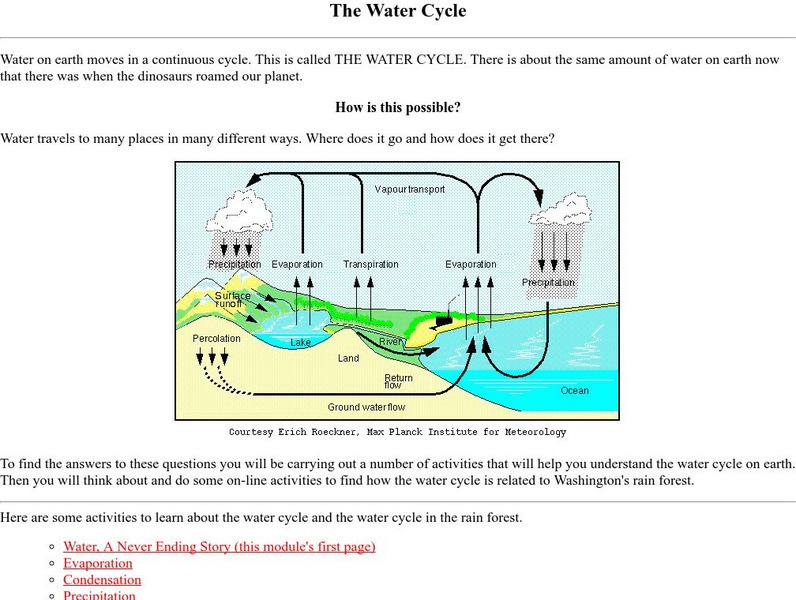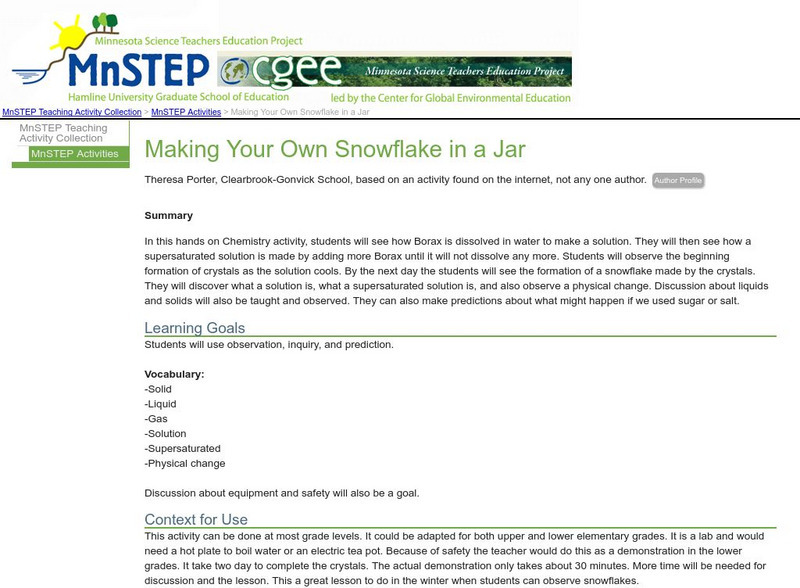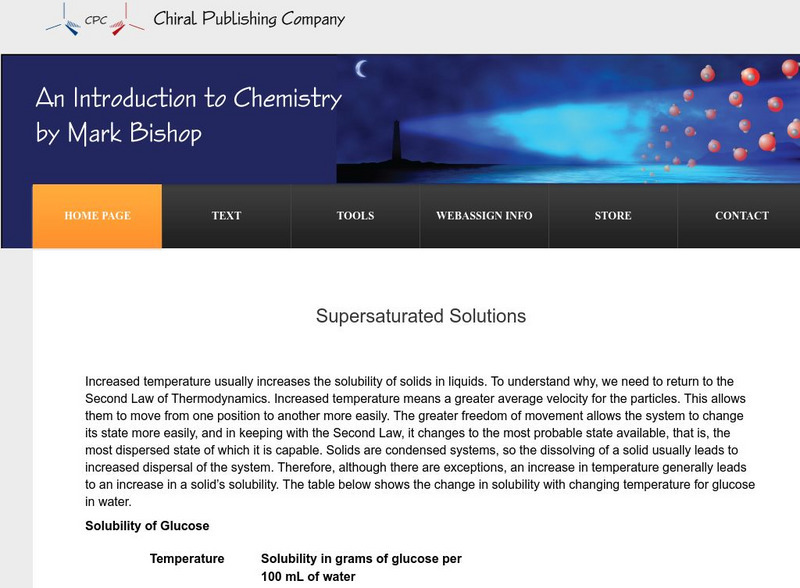University of Washington
University of Washington: Water Cycle
This page from the University of Washington has an excellent diagram of the water cycle. There are 8 water cycle hands on activities on the bottom of the page. Also there is a link to a teacher reference page.
University of Illinois
University of Illinois Urbana Champaign: Observed Dew Point Temperature
Describes what dew point is and how it relates to moisture content of the air. Also explains condensation and relative humidity.
University of Colorado
University of Colorado: Physics 2000: Temperature and Absolute Zero
A thorough, multipage discussion of color and color television sets that explains how an image is formed on the television using red, green, and blue light. Understandable discussion, excellent graphics, and many interactive Java applets.
Science Education Resource Center at Carleton College
Serc: Making Your Own Snowflake in a Jar
In this activity, students will learn about supersaturated solutions. They will observe the beginning formation of crystals as the solution cools and by the next day, the students will see the formation of a snowflake made by the crystals.
The Tech Interactive
Tech Museum of Innovation: Saturation
After defining saturation, this site provides an example and then begins an activity called "Experimenting with Saturation," involving degrees of saturation and saturation with images.
The Tech Interactive
Tech Museum of Innovation: Color
This section of the Tech Museum of Innovation on color is divided into sections including hue, saturation, brightness, and go wild. Each section includes information as well as learning activities.
The Tech Interactive
Tech Museum of Innovation: Brightness/saturation/hue
This site combines the elements of brightness, hue, and saturation to see differences in color in the things around us. Each element is dealt with individually and is incorporated into an activity involving all three.
Other
Cambridge University: Color Perception Tutorial
This helpful tutorial on color perception is divided into sections including our eyes and vision, additive and subtractive color mixing, hue and saturation, and color properties.
CK-12 Foundation
Ck 12: Physical Science: Saturated Hydrocarbons
[Free Registration/Login may be required to access all resource tools.] Definition of a saturated hydrocarbon, how it is named and the shapes it forms.
CK-12 Foundation
Ck 12: Physical Science: Saturation
[Free Registration/Login may be required to access all resource tools.] Saturation and the difference between saturated and unsaturated solutions.
Chiral Publishing
Chiral Publishing: An Introduction to Chemistry: Supersaturated Solutions
Learn about how greater temperatures increase the solubility of solids in liquids due to a greater velocity of the particles. A chart helps explain the solubility rate of glucose at different temperatures. Also, find links to textbook...
CK-12 Foundation
Ck 12: Chemistry Simulation: Rock Candy
[Free Registration/Login Required] Students will explore making solutions.
Science Bob Pflugfelder
Science bob.com: Make Your Own Rock Candy!
This concise site provides directions for creating rock candy using a super-saturated sugar water solution. Describes super-saturation following the procedure.
ClassFlow
Class Flow: Solubility and Solution
[Free Registration/Login Required] This flipchart explains the concepts of solubility, saturated, unsaturated, supersaturated, the factors affecting solubility, and molarity concentration calculations.










